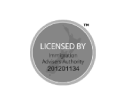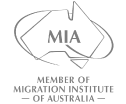Australia’s citizenship-by-descent provisions allow skilled migrants to transmit their hard-earned citizenship status to children born overseas, creating multi-generational ties to Australia. With complex documentation requirements and strict eligibility windows, understanding these protocols ensures smooth family settlement during skilled migration transitions.
Pathways to Australian Citizenship for Overseas-Born Children
Citizenship by Descent Eligibility
Children born outside Australia automatically qualify if at least one parent was an Australian citizen at their birth[5]. Critical parameters include:
- Application deadline before the child’s 25th birthday[5]
- Parent’s citizenship proof via passport, birth certificate, or naturalization documents[1][4]
- Good character requirements for applicants aged 18-25[5]
International Adoption Protocols
Children adopted overseas through bilateral agreements require:
- Full adoption orders from competent authorities[2]
- Proof of adoptive parents’ citizenship at adoption time[2]
- Compliance with Australia’s immigration and child protection laws[5]
Historical Claims (Pre-1974 Births)
Individuals born between 26 January 1949–15 January 1974 may apply if their Australian father was a citizen at birth, regardless of current status[5].
Documenting Citizenship Claims
Essential Evidence
All applications necessitate:
- Child’s full birth certificate showing parental details[3]
- Parent’s Australian birth certificate/passport issued before the child’s birth[4]
- Marriage certificates or court orders proving parent-child relationships[3]
Post-1986 Parental Birth Scenarios
If the Australian parent was born after 20 August 1986, additional grandparent proofs are required[4]:
- Grandparent’s Australian birth certificate (pre-1986)
- Grandparent’s citizenship certificate dated before the parent’s birth
- Grandparent’s valid Australian passport issued pre-parent’s birth[4]
Application Process and Timelines
Digital Submission via ImmiAccount
The Department of Home Affairs prioritizes online applications featuring:
- Form 118 with notarized document uploads[5]
- AUD 315 fee payment (2024 rates)[5]
- Real-time application tracking[5]
Consular Processing for Complex Cases
Australian embassies handle paper applications requiring:
- Original documents with certified copies[1][3]
- Witnessed statutory declarations[3]
- Pre-paid return postal services for certificate delivery[1]
Post-Approval Steps
Successful applicants receive citizenship certificates, enabling passport applications through:
- Completed PC8 passport forms[3]
- ICAO-compliant photos[3]
- Interview requirements for first-time applicants[3]
Strategic Considerations for Migrant Families
Timing with Parental Visa Status
Children born during skilled visa processing can obtain citizenship independently, allowing family settlement before parents secure permanent residency[1][5].
Multi-Generational Planning
Future citizenship transmission requires at least one parent born/naturalized in Australia. Grandchildren may face documentation challenges without preserved ancestral proofs[4][5].
Case Study: Tech Worker’s Newborn in Germany
A Sydney-bound data scientist on a Subclass 190 visa delivers a child in Berlin. Using the father’s naturalization certificate[1] and German birth certificate[3], they secure citizenship by descent in 6 weeks—enrolling the child in Medicare before relocating.
Proactive documentation and adherence to Australia’s lineage rules transform citizenship-by-descent from bureaucratic hurdle to strategic advantage for globally mobile professionals. Skilled migrants should initiate applications during pregnancy planning to align with migration timelines.










